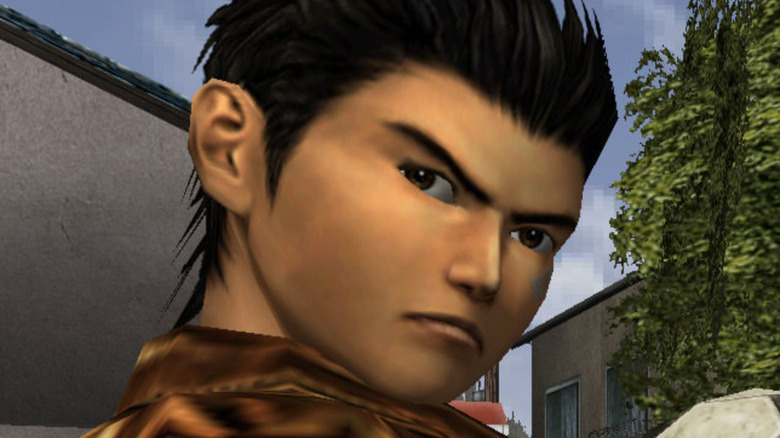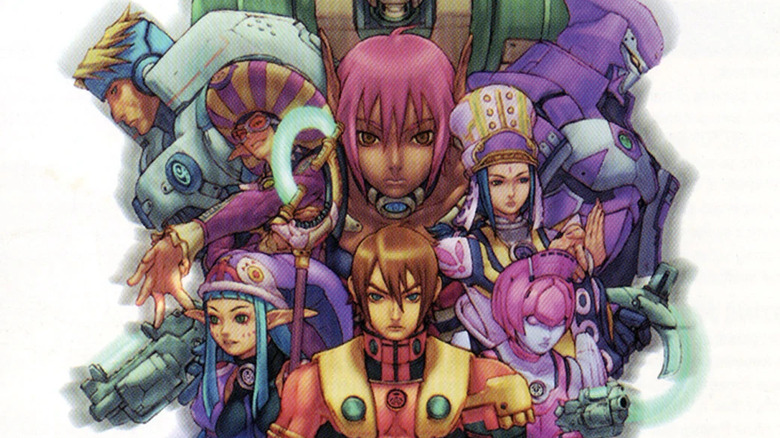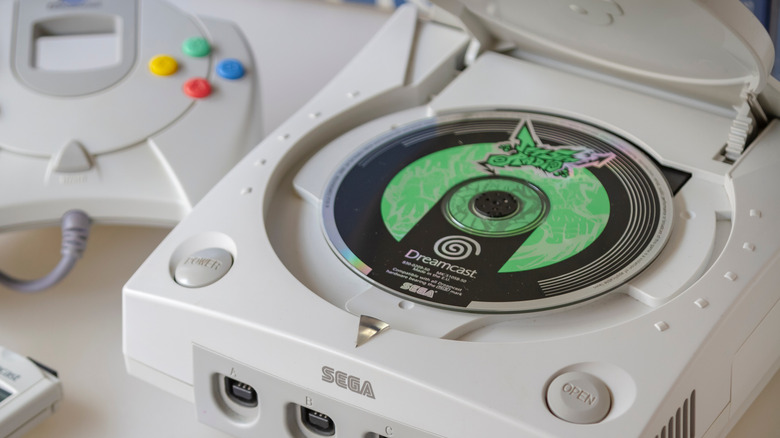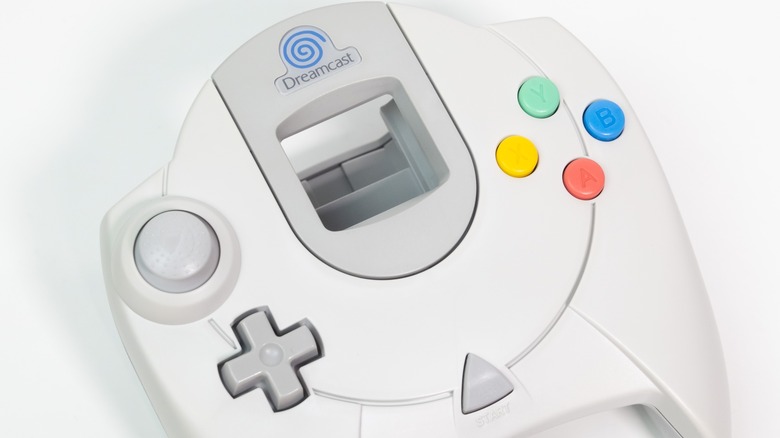The 3 Dreamcast Features Sega Executive Bernie Stolar Knew Were Worth Fighting For
The first 3D consoles released about 30 years ago now, but for a long time the capabilities of these systems were pretty limited. Sure, the Super Nintendo's "Star Fox" was 3D, but players could also count the number of polygons used for each rendered shape on one hand — maybe a little bit of an exaggeration, but nonetheless it took a long time to get to a semi-realistic level of 3D rendering. The PlayStation 1 released in the early '90s, but being the first major console of the first 3D generation meant it lacked refinement that was to come on later, more advanced systems like the Nintendo 64.
Released at the tail end of the '90s, the Dreamcast was the first console to offer HD graphics, at least for the time, but its next-gen visuals weren't the only thing that set it apart from consoles before it like the doomed Sega Saturn. It was the first console of its generation which included the PlayStation 2 and original Xbox, and despite the Dreamcast's failures, it introduced features that have become core to the gaming industry.
When interviewed alongside former COO Peter Moore with The Ringer, former Sega of America president Bernie Stolar, who oversaw the beginnings of the Dreamcast, revealed several features that he pushed for. Stolar said "I had to argue for everything," but in the end, only a few of the requests he pushed for ended up being part of the console, perhaps to the Dreamcast's detriment.
The Dreamcast needed robust online capabilities to set it apart
Aside from the Dreamcast's focus on generation-defining visuals (compare "Shenmue" to "Super Mario 64"), Dreamcast games set themselves apart thanks to its online capabilities via a 56k modem built into the console. Online-only games like "Phantasy Star Online," an MMORPG, were only possible on the Dreamcast at the time, which also allowed players to download DLC and updates via the internet. It was the first console that let players download DLC just like on PC, and it was a feature that Stolar pushed for to "define Dreamcast in the marketplace."
The Dreamcast's online capabilities were something no other console could match at the time, though it of course inspired future online console systems like Xbox Live. "It just ushered in something we take for granted now, which is online gaming, online communities, games as a service, games that you can't finish because the content keeps coming," said Peter Moore, who replaced Stolar as Sega of America president in 2000. "It was groundbreaking, but I think we broke the ground for somebody else."
Stolar wanted DVD support but knew cloud gaming was the future
Though online functionality was baked into the Dreamcast, other features that Stolar pushed for didn't make it through the console's development — or weren't considered in the first place. One of these features was DVD support, a big deal for the time as DVDs were a current, relevant form of media in the late 90s and early 2000s. Dreamcast superfans figured out how to upgrade the Dreamcast by forcing the console to play DVDs a few years ago, but back then it just was not possible because it was too expensive for Sega.
It wasn't the end of the world for Stolar, as he had the main feature he wanted implemented and he knew the future wasn't in DVDs anyway. "Online was most important to me ... I chose that over DVD and internal storage because my plan was to add those later," Stolar said. "I saw network play and the internet evolving, and I knew cloud gaming was coming."
The PlayStation 2, which was released right at the end of the Dreamcast's lifetime in 2000, could play DVDs with hardly any extra input from the user — since then, most consoles have been able to play DVDs, Blu-Rays, and other forms of non-gaming media. This feature for the Dreamcast would, too, have been ahead of its time — but only barely.
Internal storage and other minor features Stolar thought the Dreamcast needed
Stolar got his wish of getting online capabilities in the Dreamcast, but he had to put other requests to the side as it was the most important feature for the console. It lost the ability to play DVDs, true, but plans to include internal storage in the Dreamcast were also scrapped in favor of focusing on online multiplayer functionality instead. The Dreamcast had the least on-deck storage of its contemporaries and used Sega's GD-ROM format, which was based on CDs, offered less space for games, and was more prone to piracy than the newer DVD format.
Players had to use VMUs, memory cards that could be slotted into a controller to give it a small, interactive second screen — like an early Wii U controller. Stolar pushed for internal storage rather than have them be tied to the controller, but wasn't successful. Though internal storage and DVD capability were the biggest requests that never came to be, Stolar also pushed for a dual-stick controller layout akin to the PlayStation 1 and several more focused hardware add-ons that could have made the Dreamcast more relevant in the modern day, or at least looked back upon more favorably.




